 To enhance service speed and avoid tariff delays, we've opened a US warehouse. All US orders ship directly from our US facility.
To enhance service speed and avoid tariff delays, we've opened a US warehouse. All US orders ship directly from our US facility.
| Cat. No. | Product Name | Field of Application | Chemical Structure |
|---|---|---|---|
| DC72584 | M47 Featured |
M47 is a small molecule that selectively destabilizes Cryptochrome 1 (CRY1) and increases degradation of the CRY1 in the nucleus. M47 enhances apoptosis in Ras-transformed P53-deficient mouse skin fibroblast lines and enhances life span in p53 knockout mice. M47 can be used in research of cancer.
More description
|
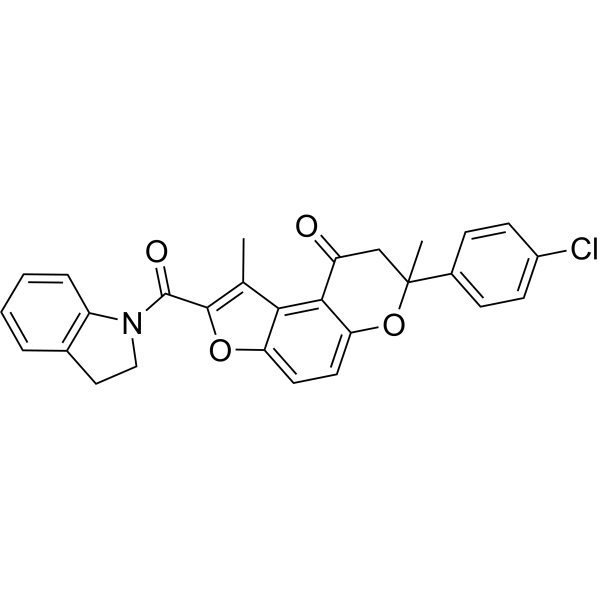
|
| DC73063 | MU-UNMC-2 Featured |
MU-UNMC-2 is a potential small-molecule inhibitor of S-RBD and ACE-2 interaction, shows antiviral activity against SARS-CoV-2 with IC50 of 1.72 uM in human bronchial epithelial cells.
More description
|
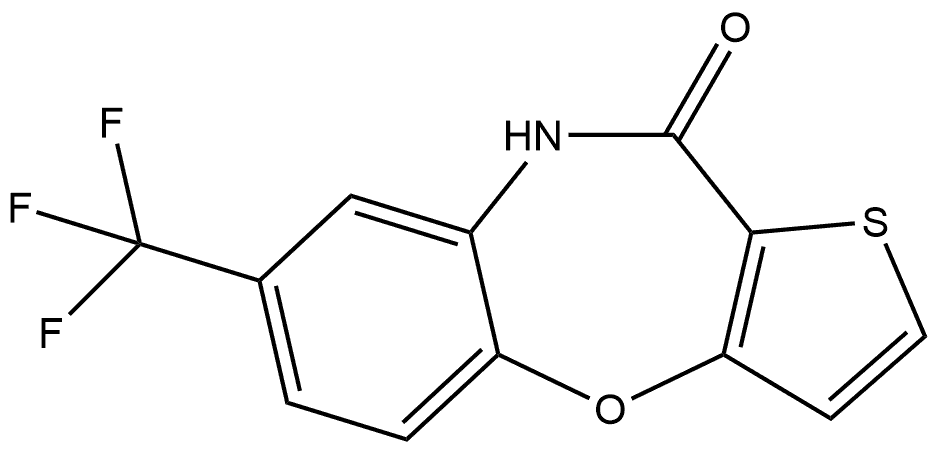
|
| DC73397 | BPRCX807 |
BPRCX807 (BPRCX-807) is a highly selective and potent CXCR4 antagonist with binding IC50 of 40.4 nM and EC50 of 48.1 nM for cell-mobility activity in the chemotaxis assays, inhibits CXCL12-mediated cell signaling pathway.
More description
|
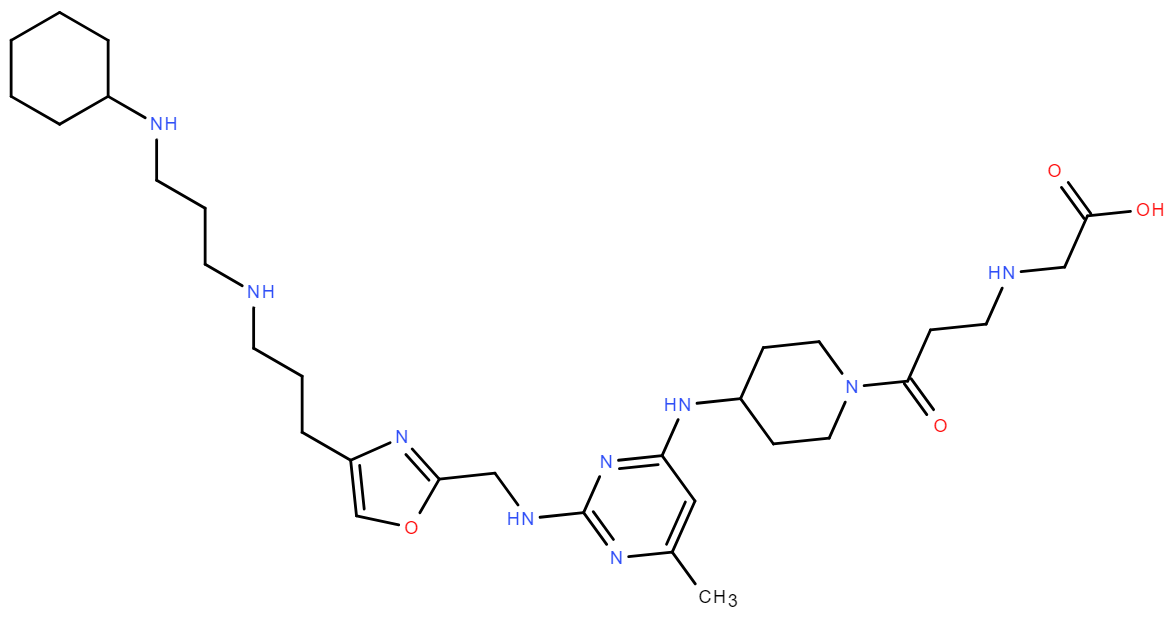
|
| DC73396 | BPRCX714 |
BPRCX714 (BPRCX 714) is a highly selective and potent CXCR4 antagonist with binding IC50 of 34.2 nM, effectively inhibits CXCL12-induced movement of CCRF-CEM cells with EC50 of 13.7 nM.
More description
|
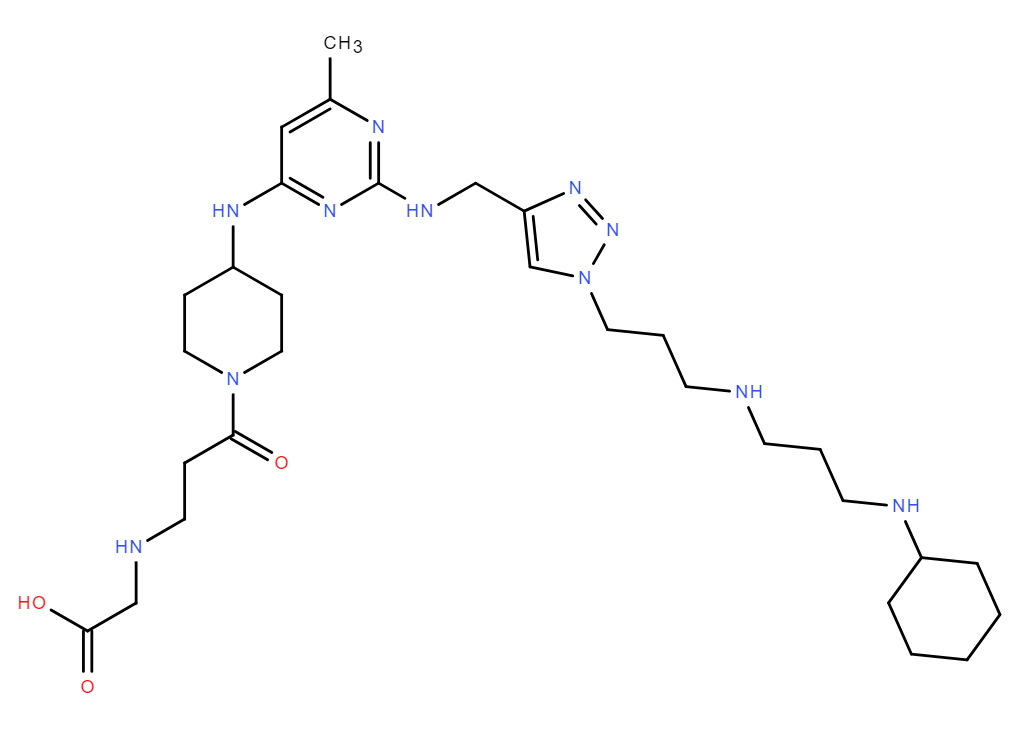
|
| DC31451 | CCS-1477(CBP-IN-1) Featured |
CCS-1477 is a potent and selective p300/CBP bromodomain inhibitor, is targeted & differentiated from BET inhibitors in prostate cancer cell lines in vitro. Combination of CCS1477 & JQ1 resulted in a highly synergistic inhibitory effect on proliferation in normal 22Rv1 cells. Global gene expression analysis revealed significantly fewer altered genes after CCS1477 (27 up, 119 down) compared to JQ1 (196 up, 655 down).
More description
|
.gif)
|
| DC7723 | OTS-964 Featured |
OTS964 is a novel TOPK(T–lymphokine-activated killer cell–originated protein kinase) inhibitor.
More description
|

|
| DC26003 | OTS-964 HCl Analogue Featured |
Novel PDZ binding kinase (PBK) inhibitor.
More description
|
.png)
|
| DC42537 | ALC-0315 Featured |
ALC-0315 is an ionisable aminolipid that used for mRNA compaction and aids mRNA cellular delivery. ALC-0315 can be used to form lipid nanoparticle (LNP) delivery vehicles.
More description
|

|
| DC80080 | OF-C4-Deg-Lin Featured |
OF-C4-Deg-Lin is a novel ionizable lipid for RNA delivery. OF-C4-Deg-Lin LNPs entrapping mRNA coding for luciferase induce the majority of protein expression in the spleen, with minimal translation in the liver, and negligible translation in other organs. OF-C4-Deg-Lin LNPs entrapping mRNA coding for luciferase induce the majority of protein expression in the spleen, with minimal translation in the liver, and negligible translation in other organs. To improve the mRNA delivery to extrahepatic tissues, a series of degradable diketopiperazine-based ionizable lipids were synthesized. Through evaluating the mRNA functional activity delivered by iLNPs, it was found that the ionizable lipids with
doubly unsaturated lipid tails and linkers containing a length of four carbon aliphatic chain (Of-C4-Deg-Lin) could deliver the mRNA more efficiently. Moreover, compared with cKK-E12 and Invivofectamine, Of-C4-Deg-Lin could specifically induce more than 85% of firefly luciferase expression in spleen,minimal expression in the liver, and insignificant expression in other tissues.
More description
|
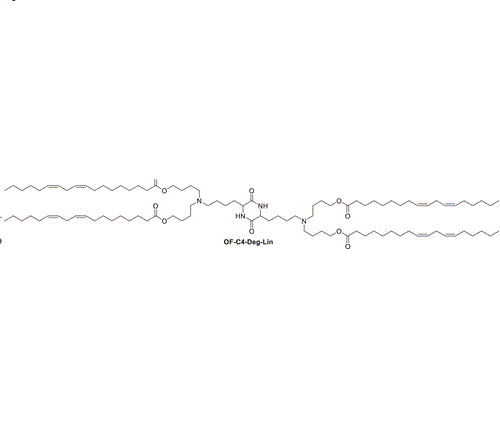
|
| DC67217 | Moderna Lipid 48 Featured |
Moderna Lipid 48 is an novel ionizable amine lipid used for mRNA delivery from Moderna patent WO2017049245A2
More description
|

|
| DC67212 | Acuitas Lipid III-25 Featured |
Acuitas Lipid III-25 is an novel ionizable amine lipid used for mRNA delivery from Acuitas Therapeutics patent US 10,166,298 B2, with pKa 6.22, Liver Luc 1648 for 0.3mgkg(ng luc/g liver), Liver Luc 13880 for 1mgkg(ng luc/g liver) . It is an analgous of ALC-0315, showing higher activity than ALC-0315.
More description
|

|
| DC82001 | 4A3-SC8 Featured |
4A3-SC8 is a novel Ionizable amino lipid for RNA delivery.The CRISPR-Cas9 gene editing system has been a hotspot in the
field of gene therapy, especially the gene correction induced by
homology-directed repair (HDR). However, its application has
various obstacles, such as large molecular weight, poor stability,
off-target risk, and the complexity of codeliver multiple genes.
Farbiak et al. established a novel ionizable lipid library consisting
of four distinct amine cores (3A3, 3A5, 4A1, 4A3) and nine
peripheries with different alkyl chain lengths (SC5-SC14), and screened out a class of iLNPs with ability of encapsulating
Cas9 mRNA, sgRNA and donor DNA simultaneously.
The delivery efficiency (quantified by luciferase mRNA expression)
and iLNPs toxicity were evaluated with three different cell
lines (HEK293T, HeLa, and IGROV-1), indicating the formulation
containing 4A3-SC8 was the best. 4A3-SC8 iLNPs successfully
induced HDR in HEK293 cells by one-pot delivery of Cas9
mRNA, sgRNA, and the correct ssDNA template. Confocal
microscopy imaging showed that a portion of blue fluorescence
in cells was corrected to green fluorescence. Furthermore, the
nucleic acid ratios of Cas9: sgRNA: donor DNA loading in
iLNPs at a ratio of 2:1:3 could maximize the HDR efficiency with
the editing efficiency up to 23%, which breaks through the current
bottleneck of HDR efficiency of only 1–5%. This progress is
undoubtedly an important advance in the gene therapy field to
cure diseases caused by genetic mutations.
More description
|

|
| DC67216 | Moderna Lipid 26(Lipid M) Featured |
Moderna Lipid 26(Lipid M) is an ionizable cationic lipid (pKa = 6.75) that has been used in the generation of lipid nanoparticles (LNPs) for mRNA delivery in vivo. LNPs containing lipid M and encapsulating mRNA encoding influenza virus genes increase anti-influenza virus IgG titers in cynomolgus monkeys without inducing local edema, erythema, or systemic levels of IL-6.
More description
|
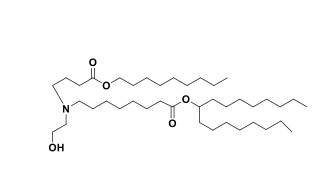
|
| DC67218 | Moderna Lipid compound 182(Lipid 29 analogue-1) Featured |
Moderna Lipid compound 182(Lipid 29 analogue-1) is a novel ionizable amine lipid developed by Moderna for the delivery of mRNA-based therapeutics. This lipid is part of Moderna's proprietary lipid nanoparticle (LNP) delivery platform, which is designed to encapsulate and protect mRNA, facilitate its cellular uptake, and enable efficient intracellular release. The ionizable nature of Lipid Compound 182 allows it to interact with mRNA at low pH (during LNP formulation) and release the payload in the neutral pH environment of the cytoplasm, making it a critical component of Moderna's mRNA delivery system.
More description
|
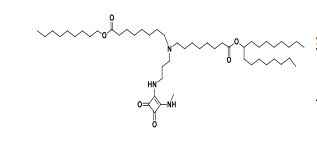
|
| DC60898 | 3-Hydroxycholesta-5,24-dien-7-one; 3β-form, Ac Featured |
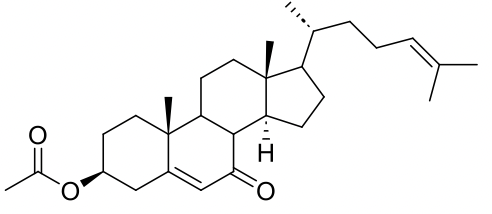
|
|
| DC60897 | Cholest-7-en-3-ol,acetate, (3b)- (9CI) Featured |
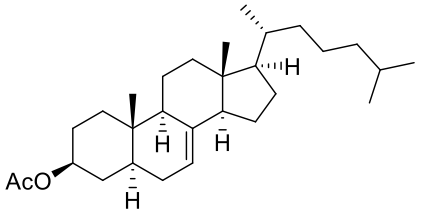
|
|
| DC60896 | 7,8-Didehydrocholesterol Acetate Featured |
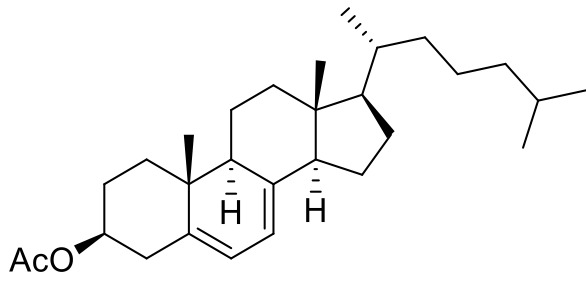
|
|
| DC60895 | 7-p-Toluenesulfonylhydrazide Cholesterol 3-Acetate Featured |
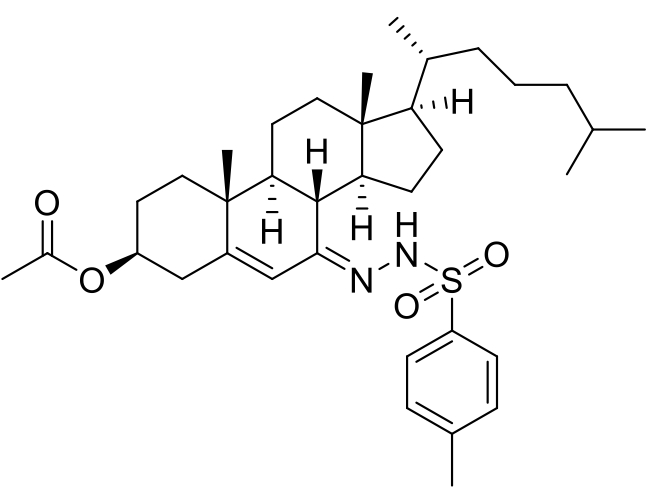
|
|
| DC60894 | 7-Oxo Cholesterol 3-Acetate Featured |
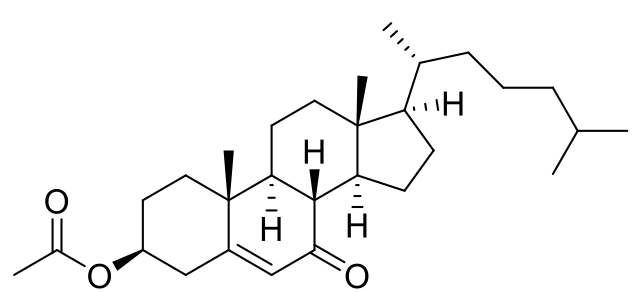
|
|
| DC60893 | 3-Keto Cholesterol Featured |
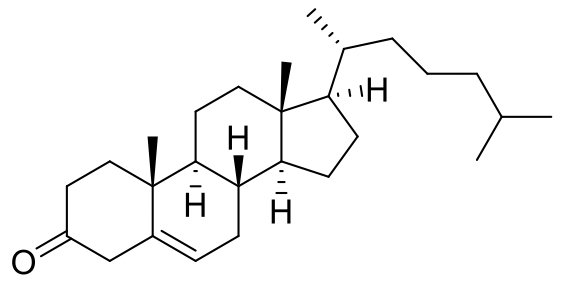
|
|
| DC60892 | 7-Keto Cholesterol Featured |
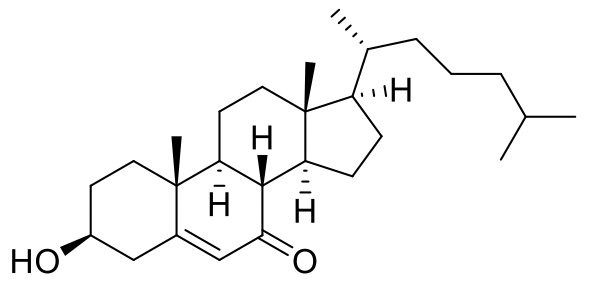
|
|
| DC60891 | 4-Methyl-cholesterol Featured |
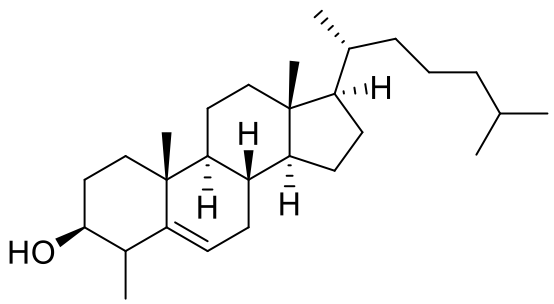
|
|
| DC43955 | 4α-Methylcholesterol Featured |
4α-Methylcholesterol is a Cholesterol derivative. 4α-Methylcholesterol can oxidize 3-hydroxy steroid, with the apparent Km of 12.6 μM.
More description
|
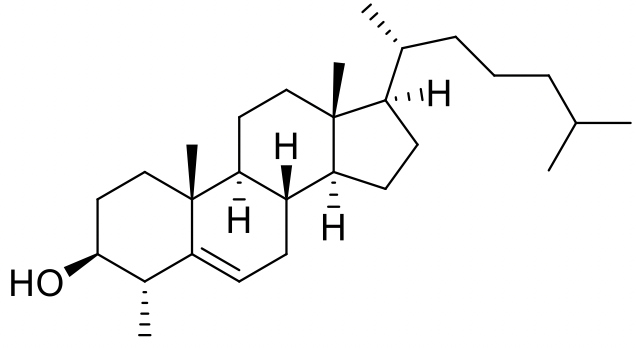
|
| DC60890 | 22a-Hydroxy Cholesterol Featured |
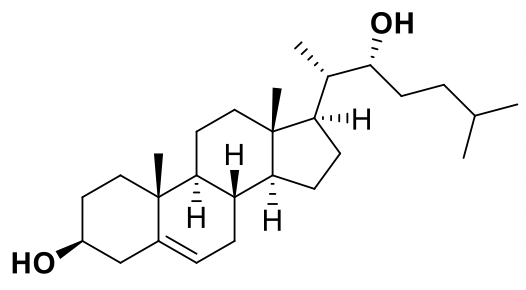
|
|
| DC67628 | NMDC-Cholesterol Featured |
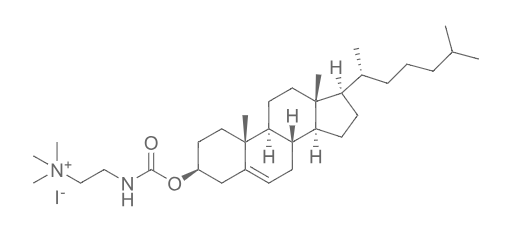
|
|
| DC21557 | RB-011 Featured |
A small molecule that disrupt 14-3-3 dimers at low micromolar concentrations and induce rapid down-regulation of Raf-MAPK and PI3K-Akt signaling in Jurkat cells.
More description
|

|
| DC60889 | 3β-Acetoxy-5α-cholesta-7,24-diene Featured |
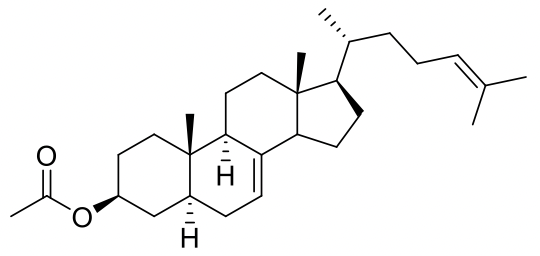
|
|
| DC60887 | (3β,5α)-Cholesta-8(14),24-dien-3-ol Featured |
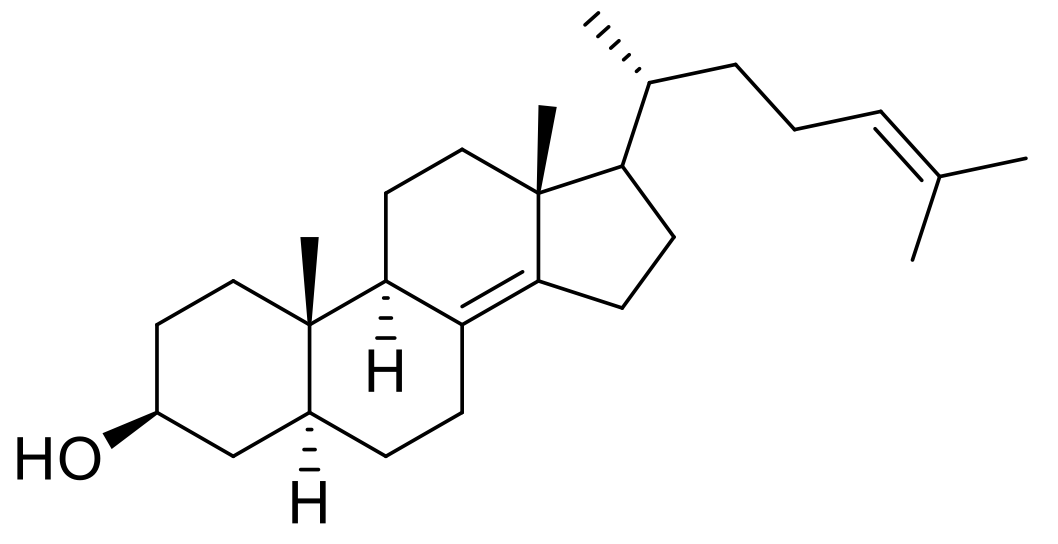
|
|
| DC60888 | DESMOSTEROL ACETATE Featured |
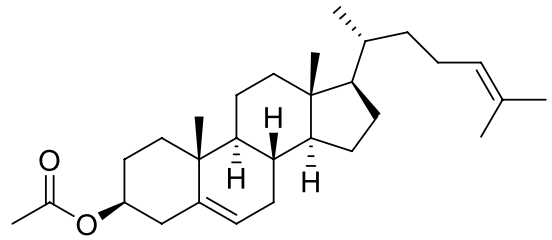
|
|
| DC60881 | 5alpha-cholestanyl-(3beta)-hydrogen sulfate Featured |
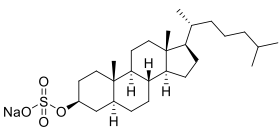
|